Contents
What Is Hair Elasticity?
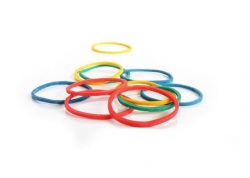
I am sure many of us who know what an elastic band is…it is a pliable piece of string that can be contorted in numerous ways without losing its shape, of course, if you stretch it too much, it might snap. So it should be easy to bring a picture to mind.
However, how does that relate to hair?
Simple enough – there is a connection. Have you ever been bored reading a book and decide to start twirling some of your hair in your fingers? Then you pull it a bit and then allow the curl to bounce back to its original curl? This is the elasticity of your hair coming into play. It might not be too obvious on dry hair, but without a doubt, you will be able to easily detect it on wet hair.
Porosity and elasticity are somewhat close friends. You can read my article on porosity here. Hair elasticity is really the ability of the hair to return to its original state after it has been stretched on its own. The strength of a hair strand will depend on the health of the cortex. 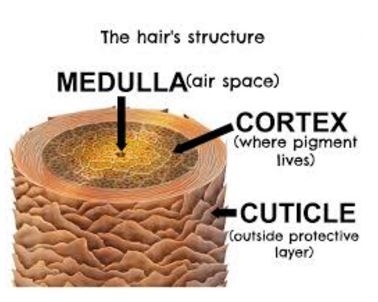 The cortex is the inner layer of the hair and determines the structure of the strand.
The cortex is the inner layer of the hair and determines the structure of the strand.
Healthy hair when wet, will stretch up to 50% of its normal length and then return to its normal length without breaking. When dry, it will only stretch 20%. A lot of women will recognise this when they refer to it as the ‘shrinkage factor’.
How can you check hair elasticity?
One easy way to do this is after you have washed your hair and the hair is soaking wet. Because the hair is saturated, it will hang a bit longer that it would when fully dry. Elasticity can be classified as low, normal, or high. The difference will determine how the hair curls on its own and how it maintains the curl pattern.
The test
Take a little section of wet hair from different areas of your head. Hold the section securely and then gently stretch the hair. If the hair stretches and then bounces back easily, then it had normal elasticity. If the hair breaks or does not return to its normal state, then it has low elasticity.
Reasons for lack of elasticity
There are two major contributors to why hair could lose its elasticity. This could happen due to:
- Heat damage
- Chemical damage
This includes direct heat hair appliances such as:
- Flat irons
- Curling combs
- Hot combs
- Blow dryers
- Mother Nature – over-exposure and no protection from the sun
Chemical damage
This includes:
- Hair relaxers
- Hair perms
- Hair color agents
With chemical processes, they have a tendency to completely alter the hair structure and thereby increasing the hair’s porosity. In order to help minimize this damage, one needs to follow a strict deep-conditioning regimen to maintain hair health.
With heat applications, especially when the temperature is too high and on a constant basis, the effect is just as similar to the chemical process. It does not cause permanent damage, but a somewhat temporary break in the hair structure and this leaves the strand straight and unable to curl on its own even after being wet. These breaks in the hair shaft will create porous hair strands which lack moisture and will be prone to breaking once stretched.
Can you correct hair elasticity?
Correcting hair elasticity might not be an easy task – naturally, it also depends on the extent to which it is damaged, it might be easier to just cut off the damage and care of the rest of the hair. Hair loves moisture in order to maintain its elasticity. I recommend a moisture (water) based regimen to start.
You have to also remember that balance between moisture and protein (strength building) of the hair is important. You don’t want to sway to either extreme – none of which is good for the health of the hair.
So, if your hair is dull, weak, and stretches too much when it is wet, then a protein-based deep conditioner is what you need to help the problem. This is a sign that your hair is over-moisturized.
On the other hand, if your hair is dry and breaks easily, then you need to focus on a water-based moisturizing deep-conditioning regimen in your hair care. You have to be aware of your hair’s health and make the best maintenance decision for its health. This will help the elasticity of your hair.
Ways to correct elasticity
Here are a few ways that you can implement to help correct your hair’s elasticity:
- Protein reconstructors – made from keratin or vegetable protein – the application can be 2mins or even 1 hour.
- Water –
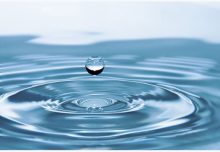 the easiest and inexpensive way to moisturize your hair.
the easiest and inexpensive way to moisturize your hair. - Deep conditioners
- Honey –
 it has humectant properties and it will ensure that moisture is drawn into the hair strand and maintain suppleness.
it has humectant properties and it will ensure that moisture is drawn into the hair strand and maintain suppleness. - Coconut oil –
 it penetrates the hair strand up to 75% and provides a source of protein to the strand.
it penetrates the hair strand up to 75% and provides a source of protein to the strand. - Shea butter –
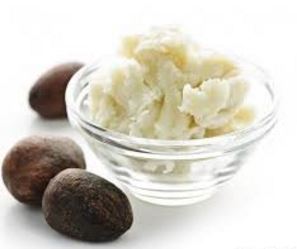 it is a great sealant for the hair after infusing the hair with moisture and helps to maintain the hair’s elasticity.
it is a great sealant for the hair after infusing the hair with moisture and helps to maintain the hair’s elasticity. - Apple cider vinegar –
 it helps to balance the ph of the scalp and hair and helps to close the hair cuticles after cleansing.
it helps to balance the ph of the scalp and hair and helps to close the hair cuticles after cleansing. - Aloe vera –
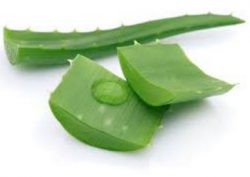 a natural miracle in moisturizing the hair naturally. It also helps to balance the ph of the hair.
a natural miracle in moisturizing the hair naturally. It also helps to balance the ph of the hair.
I hope this information will be useful on your hair journey. I welcome your feedback as well.
Thank you.

It seems like since I’ve turned 50 my hair is not as elastic as it once was. Your post got me wondering if it could be due to the aging process. Also, it seems to be getting thinner. I just recently started using coconut oil between shampoos ( i try not to wash it every day) and it does seem to be helping. I love all these natural remedies. I’m going to try ACV as well! Thank you. Great post.
Hello Jackie,
Thanks for stopping by my and taking the time to voice your thoughts. Yes, I think as we get more mature, like anything else, our bodies go through changes. The best thing we can do is to supplement it as much as we can. I love coconut oil and it does help in bringing back ‘life’ to your tresses. ACV is also a great natural product to use occasionally as a part of your hair regimen.
I hope that, in time, over using more natural products, your hair will ‘bounce back’ to where it use to be and you will be more at ease. Just a little TLC and it can make a world of difference.
Much success.
Michelle